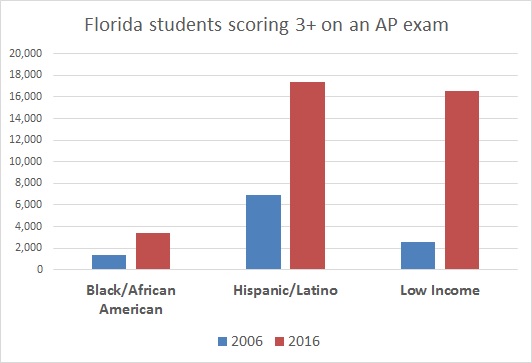Tag: low-income students

Low-income students drive Florida’s success on AP tests
Florida continues to be a national leader on college-caliber Advanced Placement exams, fueled by the success of growing numbers of low-income students. The Sunshine State ranks No. 4 in the nation in the percentage of graduating seniors who have passed at least one AP exam, according to 2016 data released... READ MOREThanks to school choice scholarship, he’s a 21st Century learner
by Perry Athanason Cristina Valdes noticed her fourth-grade son’s interest...
READ MOREPlenty of upside for AP push
Every few months, a major media outlet writes an expose...
READ MOREThe unrealized dream of educational justice
Editor’s note: This is the fourth and final post in...
READ MOREDarrell Allison: Access denied, from lunch counters to zip codes
Editor’s note: This is the second in our series of...
READ MOREDr. King, the Dream & educational progress
Fifty years ago next week, Dr. Martin Luther King Jr....
READ MORELow-income students need more resources to close achievement gaps
The latest Florida Department of Education report on the tax...
READ MOREA little context for a rough patch in Florida ed reform
Between 2011 and 2012, the number of Florida high school...
READ MOREThe students who come and go from Florida’s Tax Credit Scholarship
The latest report on academic performance in the Florida Tax...
READ MORELatest finding: Districts are increasingly cooperating with charter schools
A growing body of research suggests charter schools provide a...
READ MORECommon Core + school choice can help low-income kids
The Cato Institute’s Jason Bedrick was unimpressed with my explanation...
READ MORE

